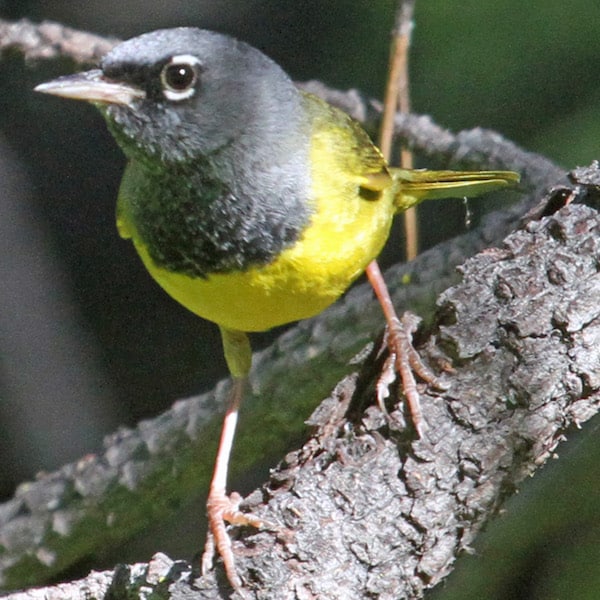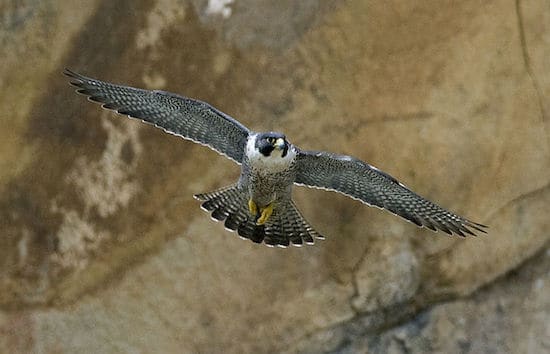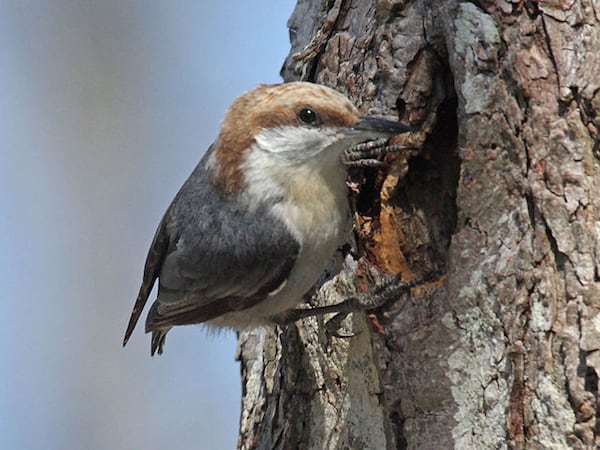Look for
The MacGillivray’s warbler is a small songbird with a gray head and throat, often with a darker gradation on the upper breast. It has a muted olive-green back and wings and a yellow belly. It also has clear white arches above and below the eye, making it distinguishable from the nearly identical mourning warbler. The female MacGillivray’s warbler is a paler version of the male with more greyish-green upperparts and subtler white eye-arcs.
Listen For
The MacGillivray’s warbler’s song is high-pitched, rolling chant of chree, chree, chree, sweet, sweet! Its call is a sharp, high chip noise with consistent pitch.
Find It
The MacGillivray’s warbler prefers to breed in the western part of North America, particularly the boreal forests of Canada and the Pacific Northwest of the United States. Despite being visually and behaviorally similar to the mourning warbler of the East, the two species’ breeding ranges do not overlap.
The MacGillivray’s warblers inhabit low, dense undergrowth and shady thickets near the edge of coniferous and mixed deciduous forests. In the fall, they migrate down south and are often see in substantial numbers in the Southwest of the United States. They spend the winter in Central America, particularly Mexico, where they like to stay in shrubs.
Feeding Behavior
The MacGillivray’s warbler feeds on a variety of insects including beetles, caterpillars, and alfalfa weevils. They primarily forage in areas near the ground in dense thickets in order to find insects on foliage and branches. Some young birds in Colorado have also been observed as feeding on sap from willow where a sapsucker had previously drilled.
Nesting Behavior
The MacGillivray’s warbler creates their nests in spots among dense shrubs often around 2-3 feet off the ground in an vertical fork of fir saplings, scrub oaks, or alders. They also often make nests in dark, damp places or in tall ferns or weeds.
Both sexes work together to build an open cup shape made of bark, dry grass, and stems and lined with finer grasses and hair. The female lays around 3-5 eggs that are creamy white with darker speckling or spots. The female incubates the eggs for 11-13 before hatching. Both parents feed the young before they leave the nest after 8-9 days.




